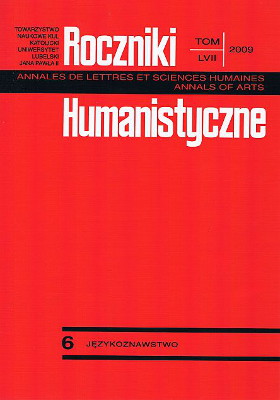Rhyme in Jan Żabczyc’s Seventeenth-Century Carols
Abstract
This paper analyses rhyme from the grammatical and lexical point of view in one of the most popular collection of carols in Polish literature, i.e. the early Baroque Symfonije anielskie (Angelic Symphonies, 1630) by Jan Żabczyc. It is an attempt to define the cycle under study with regard to its versification as a traditionally piece of Renaissance or its innovative approach. The material has been submitted to a many-faceted analysis with regard to its form of rhyme (its connection with accent, area of sonority, degree of accuracy), set of rhyme in the verse, inflectional structure, word formation, syntactic and lexical aspect of rhyme, grammatical and non-grammatical character of rhyme.
The rhymes in the Symfonije are decidedly traditional: feminine, accurate, one and a half syllabic, and paroxytonic. Żabczyc in this regard is faithful to Renaissance and its principles as formulated by Jan Kochanowski, a fact testified by the application of the principle of accuracy, respective selection of parts of speech in the position of rhymes, concern about the vowel final sound of rhymes, simplicity and moderation of rhyme understood as the lack of expressions- embellishments, and semantic transparency. The rhyme shaped in this manner fulfils several important functions: verse-making (it makes up the verse structure of carols), instrumentative (it builds a harmonic phonic form of a cant), semantic (it reflects the main thematic circles of the whole collection, therefore it harmonizes with the general expression of the cycle). Our comparison between Żabczyc and the type of assonances in other sixteenth- and seventeenth--century poets indicates that with regard to the range of rhyming structures the writer refers, as it has already been mentioned, to the tradition of Renaissance. Kochanowski’s writing was his literary model, but he also reaches to new Baroque elements (he was the first in the history of literature who relied so broadly on pastoral motives, constructed the masculine rhyme that was unknown before his times and in Baroque, and borrowed Kochanowski’s surrounding rhyming). The rhyme-making manoeuvres betray a general refinement of the writer, his knowledge and imitation of traditional patterns, but also show the fledgling new literary solutions that functioned then.
Copyright (c) 2009 Roczniki Humanistyczne

This work is licensed under a Creative Commons Attribution-NonCommercial-NoDerivatives 4.0 International License.





